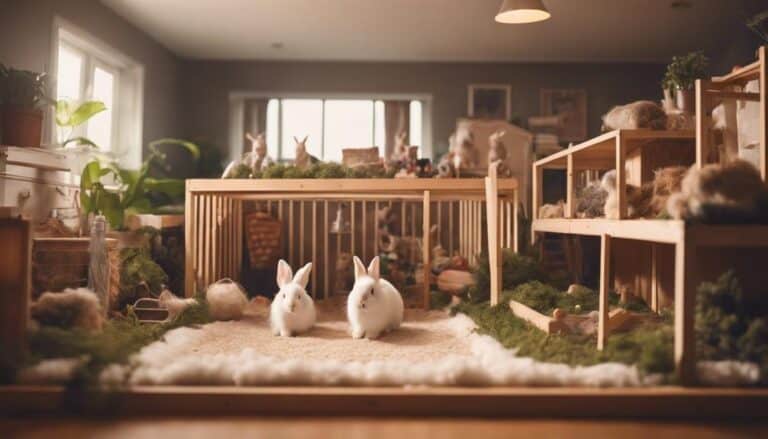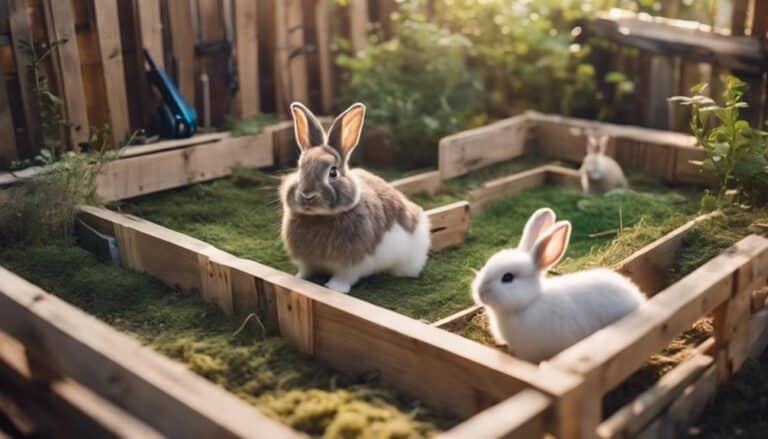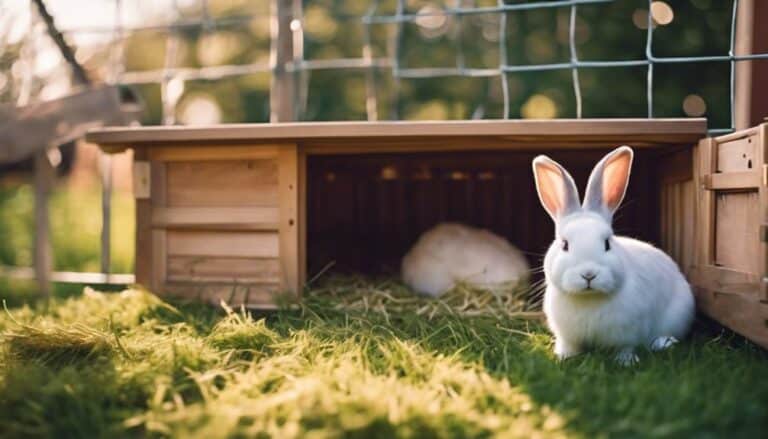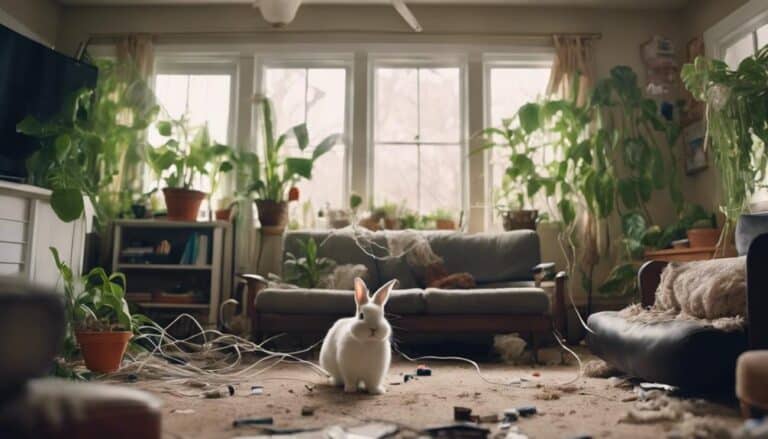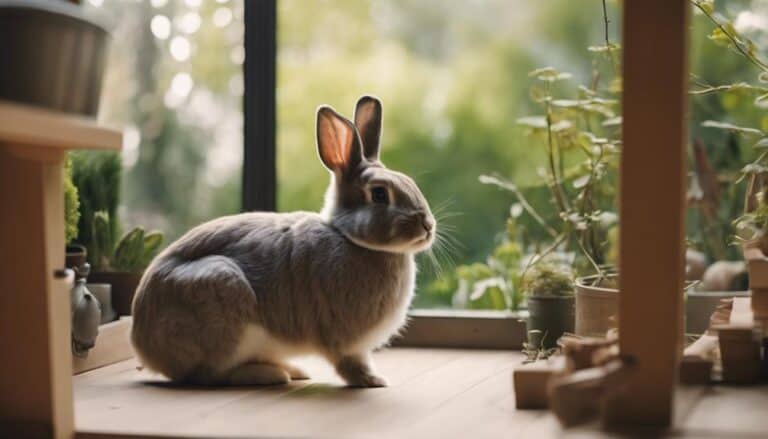Did you know that the eco-friendly materials used in bunny homes can have a major impact on the environment? From bedding to toys, every choice matters.
Understanding which materials are best for your bunny's dwelling is essential for their well-being and sustainability. By making informed decisions about the materials you select, you can create a safe and eco-conscious home for your furry friend.
So, let's explore the top eco-friendly options for bunny homes and how they can benefit both your pet and the planet.
Contents
- 1 Key Takeaways
- 2 Sustainable Bedding Options for Bunny Homes
- 3 Eco-Friendly Flooring for Bunny Habitats
- 4 Non-Toxic Paints and Finishes for Bunny Enclosures
- 5 Recycled Material Toys for Bunny Enrichment
- 6 Energy-Efficient Lighting Solutions for Bunny Spaces
- 7 Frequently Asked Questions
- 8 What Eco-Friendly Materials Should I Use for My Bunny’s Habitat Essentials?
- 9 Conclusion
Key Takeaways
- Hay bedding promotes digestion and dental health.
- Paper-based bedding offers superior absorbency and odor control.
- Recycled material toys provide enrichment and sustainability.
- Energy-efficient lighting solutions conserve electricity effectively.
Sustainable Bedding Options for Bunny Homes
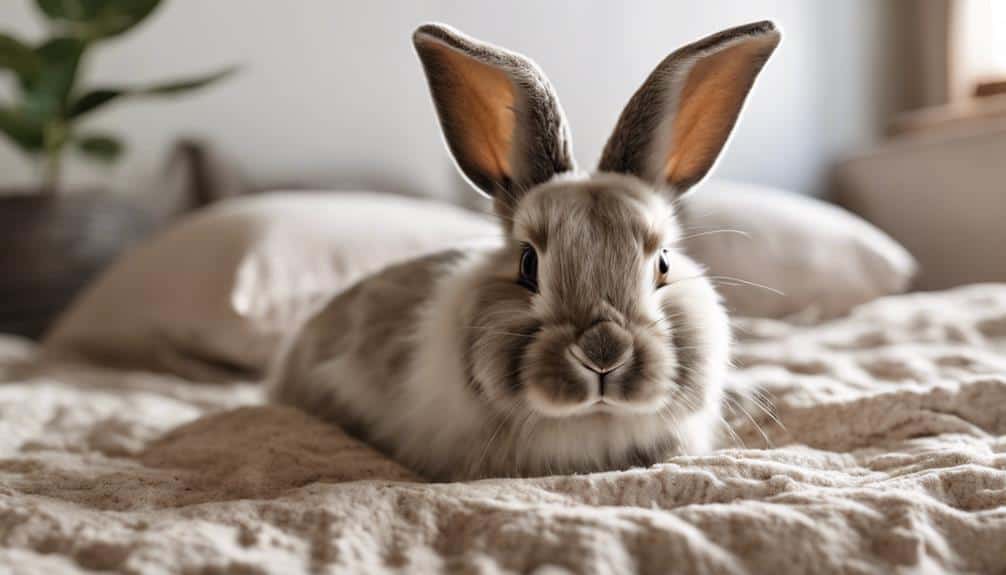
When choosing bedding for your bunny's home, opt for sustainable materials that prioritize comfort, safety, and environmental friendliness.
For rabbits, hay bedding is a top choice as it not only provides a cozy nest but also encourages hay consumption, essential for their digestion and dental health.
Paper-based bedding is another eco-friendly option that offers excellent absorbency and odor control, ensuring a clean and fresh living environment for your furry friend.
If you're looking for a creative and sustainable choice, consider using cardboard bedding made from recycled materials, which not only serves as a comfortable bedding option but also doubles as a fun toy for your rabbit to explore and chew on.
Grass mats are a natural and safe-to-eat bedding choice that provides insulation, comfort, and entertainment for your bunny.
Additionally, fabric bedding like fleece blankets and cotton towels can be a cozy alternative, but make sure to wash them regularly to maintain cleanliness and safety for your rabbit.
Prioritize sustainable bedding options to create a healthy and eco-friendly habitat for your beloved pet.
Eco-Friendly Flooring for Bunny Habitats
Natural materials like hay and straw provide excellent eco-friendly flooring options for creating a safe and sustainable habitat for your bunny. These materials are biodegradable, sustainable, and safe for rabbits to interact with.
Here are three benefits of using hay and straw as flooring in bunny habitats:
- Comfort: Hay and straw offer a soft and cushioned surface for your bunny to hop and rest on, promoting their well-being and comfort.
- Insulation: These materials help maintain a cozy environment by providing insulation against cold floors, keeping your bunny warm during chilly weather.
- Natural Environment: Hay and straw create a natural setting that mimics the outdoors, allowing rabbits to engage in natural behaviors like digging and foraging, enhancing their mental and physical health.
Non-Toxic Paints and Finishes for Bunny Enclosures
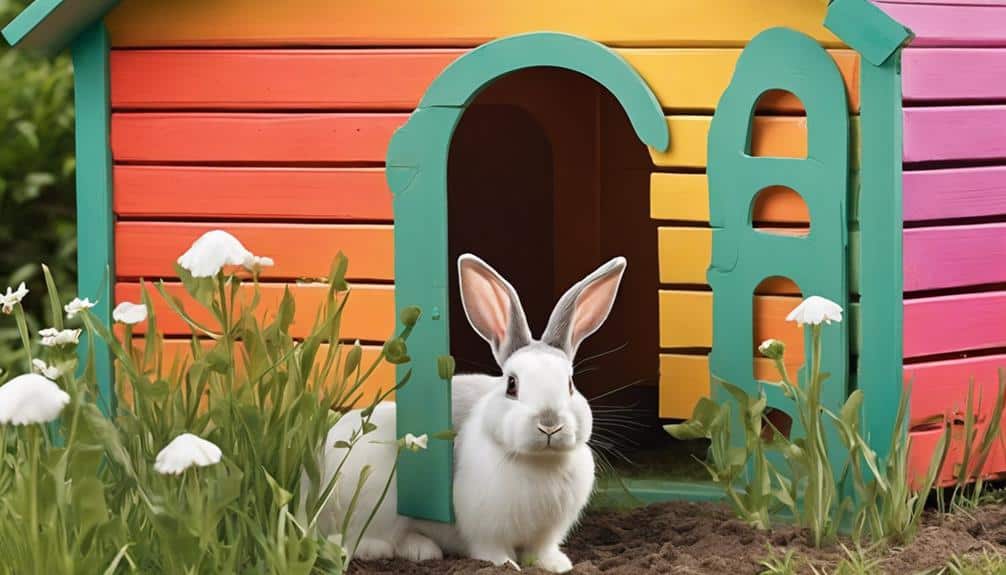
To safeguard the safety and well-being of your bunny, choosing non-toxic paints and finishes for their enclosures is important in maintaining a healthy living environment. When selecting paints, opt for water-based options that are free of VOCs. These paints help guarantee a safe environment for your bunny by reducing the risk of harmful chemical exposure.
Additionally, steer clear of paints containing lead or formaldehyde, both of which can be toxic if ingested by your rabbit. Prioritize eco-friendly paints labeled as pet-safe to create a space that promotes your bunny's well-being. By choosing environmentally friendly and pet-safe options, you not only protect your bunny from potential harm but also contribute to a sustainable lifestyle.
Recycled Material Toys for Bunny Enrichment
Utilize recycled materials creatively to craft engaging and sustainable toys for enriching your bunny's playtime activities. When considering bunny enrichment, homemade toys from recycled materials offer not only mental stimulation but also promote sustainability in pet care practices. Transform everyday items into eco-friendly toys for your bunny using these ideas:
- Cardboard Tubes and Boxes: Repurpose cardboard tubes from toilet paper or paper towel rolls to create tunnels and hiding spots for your bunny. Old cardboard boxes can be turned into mazes or chewing toys, providing hours of entertainment.
- Paper Towel Rolls and Egg Cartons: Upcycle paper towel rolls by filling them with hay or treats for your bunny to forage. Egg cartons can also be filled with small toys or treats, encouraging natural behaviors like digging and exploring.
- Repurposed Household Items: Consider using old towels or blankets as cozy bedding or as makeshift tunnels for your bunny to play in. These items not only provide comfort but also promote sustainability by giving new life to old materials.
Energy-Efficient Lighting Solutions for Bunny Spaces
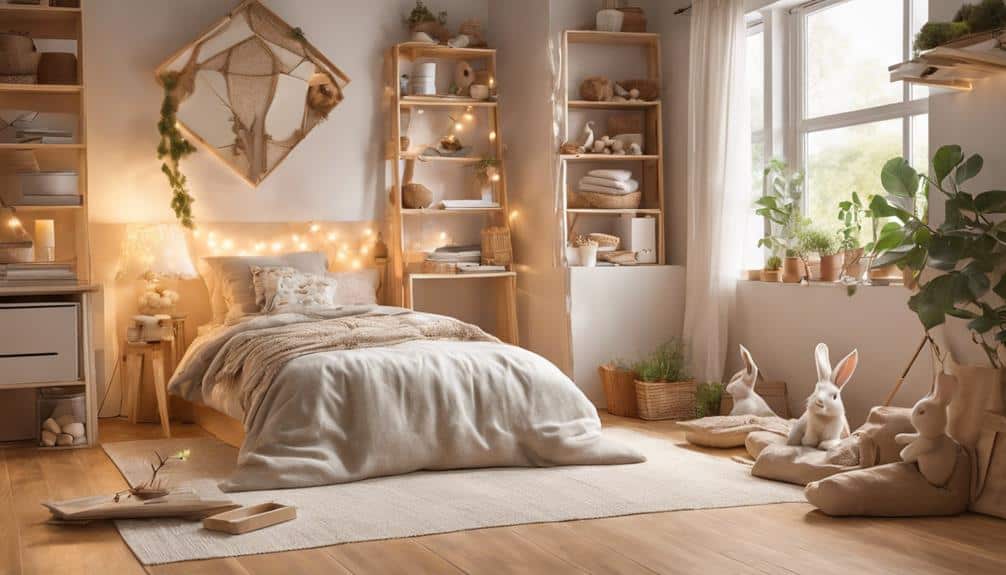
Consider implementing energy-efficient lighting solutions in your bunny spaces to create a sustainable and well-lit environment for your furry companions. LED lights are a top choice for bunny spaces as they're highly energy-efficient, consuming notably less electricity than traditional bulbs.
Opting for Energy Star certified LED bulbs can further reduce your electricity usage, promoting eco-friendliness in your bunny home. Motion sensor LED lights offer the convenience of automatically turning off when no movement is detected, effectively conserving energy.
Additionally, using dimmable LED lights allows you to adjust the brightness levels according to your bunny's needs, providing a customized lighting experience while saving energy. With a longer lifespan of up to 25,000 hours, LED lighting guarantees durability and efficiency, making it an excellent choice for environmentally conscious bunny owners looking to create a cozy and sustainable space for their beloved pets.
Frequently Asked Questions
What Is the Best Natural Bedding for Rabbits?
For rabbits, the best natural bedding choices include straw bedding, hemp mats, pine shavings, paper pellets, cardboard boxes, corn husk bedding, willow baskets, bamboo bedding, seagrass mats, and coconut fiber. These options offer comfort, safety, and eco-friendliness.
Is Eco Bedding Good for Rabbits?
Eco bedding is excellent for rabbits. Wood shavings, paper bedding, hemp mats, and more are safe, absorbent, and dust-free. They provide comfort and cleanliness, ensuring a healthy environment for your bunnies to thrive.
How Are Rabbits Eco Friendly?
Rabbits are eco-friendly through their sustainable diet, green companionship, energy-efficient housing, eco-friendly toys, natural grooming, wildlife conservation, organic treats, biodegradable waste, and earth-friendly habits. They reduce your carbon footprint and promote a more sustainable lifestyle.
What Is the Best Environment for a Bunny?
Establish a cozy indoor haven for your bunny, shielding them from harsh weather and predators. Guarantee safe toys, a playful area, bunny-proofing, a balanced diet, grooming, best temperature, social interactions, and health check-ups for a thriving bunny sanctuary.
What Eco-Friendly Materials Should I Use for My Bunny’s Habitat Essentials?
When considering essential bunny habitat needs, opt for eco-friendly materials like organic hay for bedding, untreated wood for toys and shelters, and natural fiber-based litter. Avoid plastic and synthetic materials that could harm your bunny and the environment. Prioritize sustainability and your bunny’s well-being with these eco-friendly choices.
Conclusion
To sum up, when creating a sustainable and eco-friendly home for your bunnies, remember that every little choice makes a big impact.
By opting for natural bedding like hay or straw, choosing non-toxic paints, and incorporating recycled toys, you're not only providing a safe and comfortable environment for your furry friends but also reducing your carbon footprint.
Remember, 'every little bit helps paint a greener world for our hopping companions.'


